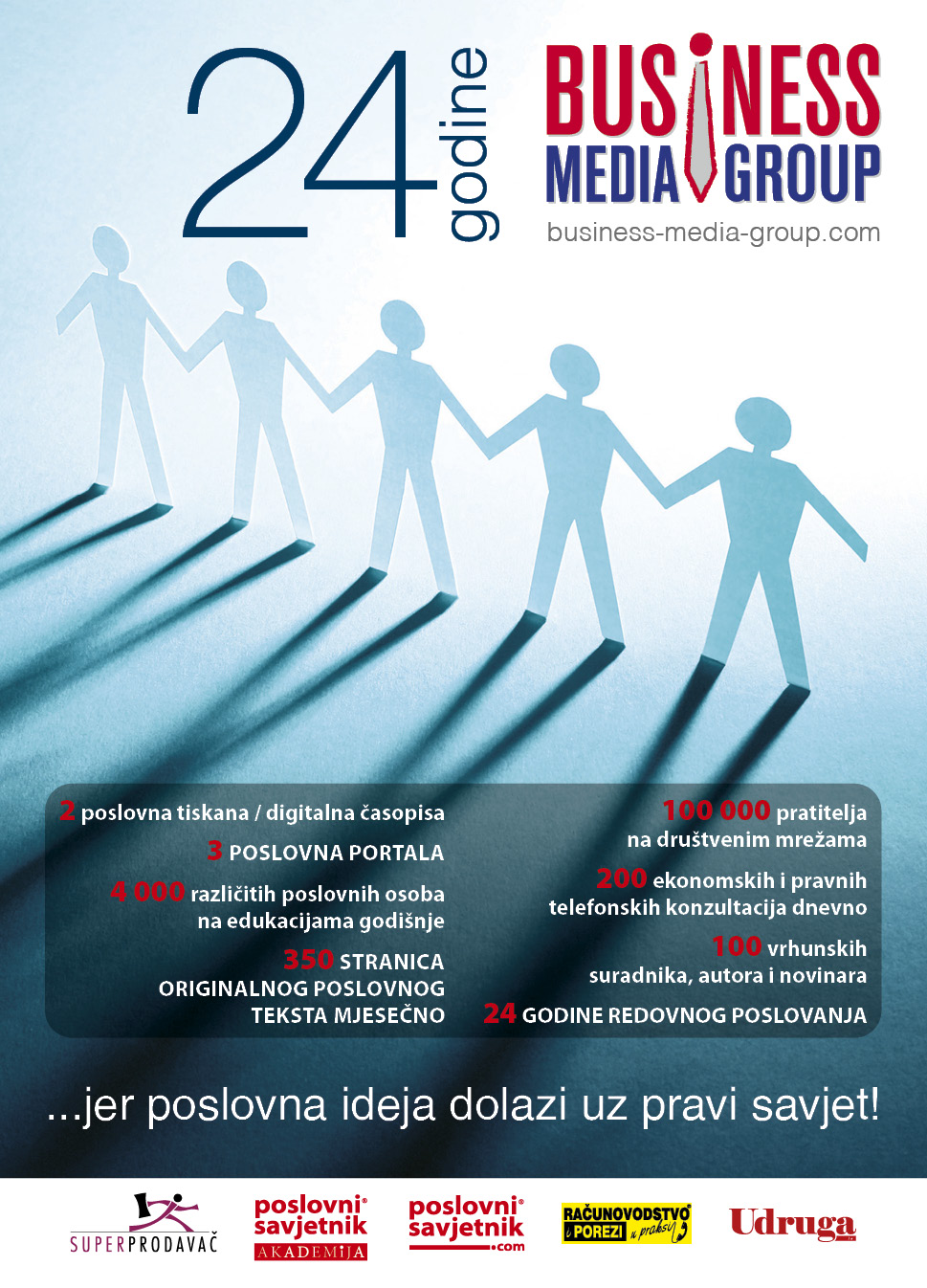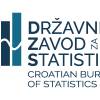John Lodder: Why many organizations don’t understand how to cope with change

We are living in times that the World Economic Forum calls the 4th Industrial Revolution, many authors write about us living in a VUCA world. VUCA is coined by the USA Army some 10 years ago and stands for Volatility, Uncertainty, Complexity and Ambiguity to describe the four main drivers of our fast changing world.
No matter the name, the point is that our world, organizations and societies are confronted with continuous fast and unexpected changes, disturbances, disruptions and new developments. These changes and their tempo’s require much from people. It also affects the brains of people that have issues with switching and coping with constant changes; most managers and their projects are linear in their thinking, methods and assignments but our brains do not work linear, that’s often a too big discrepancy. We are living in a world in which we are trying to handle a tsunami of (des)information’s, tasks and changes.
In figure 1 you see how 20th century management needs to develop into 21st century Leadership.
VUCA is the ‘New Normal’
We have to consider that ‘Change’ has always been around since time exists, and that ‘’change is the only constant’’ as Heraclitus famously said in 480 BC. We also have to realize that change also offers us opportunities because change is the basis for development and is necessary for progress.
In my October column I look at some basics of change as an inevitable phenomenon and explain the fundamental reason why many companies and many people have real issues with these turbulent times, and why many organizations and people ‘miss the boat of change’. I give the 5 main trends that are changing our ‘old’ world into a VUCA and Reinvention world. I mainly focus on leaders, consultants, coaches and functional departments like e.g. HRM, Marketing and Finance. I end with an example of how reinvention could / should be applied in financial policies.
Basics about Change
It is clear that if you do not change along with your environment and the spirit of time this can have very nasty consequences. The ‘Red-Queen Hypothesis’ says:
If an organism wants to continue to exist and develop itself in a continuous changing environment, In which competitive organisms constantly adjust to these changes, This organism must also adjust and develop itself continuously.’’ (from: ‘Alice in Wonderland’ by Lewis Carrol)
Probably this quote sounds very logic and feels like common sense, however, reality shows that we ‘en masse’ forget this logic. (Un)consciously we think that our crucial adaptation of changing our behavior comes by itself and that we are fast enough. However, the pitfall in our brains is that we then don’t put enough energy in adapting to the necessary process of change, with the result that, in the most favorable situation, we feel like a plaything of external powers that we cannot control, while in the unfavorable situation we ‘miss the boat of change’ and we could even go down like in the ‘Titanic Syndrome’, as I wrote about in my January 2022 column. (https://www.poslovni-savjetnik.com/aktualno/john-lodder-how-does-titanic-syndrome-affect-you-and-your-organization)
Missing the boat and going down is unfortunately every day’s reality.
Companies go down because they are for instance too late with technological changes, like e.g. Kodak, Nokia and Blackberry while global market leader Philips is since a year struggling to survive.
Groups go down because they hold on to traditions and values that were necessary for their identity and values but that are no longer relevant in our new present.
Individuals go down because they cannot cope with the (des)information overload or timely decision-making, and we see a rise in sick leave, burn-outs, addictions, heart issues and ‘quite quitting’.
Change in a VUCA world
Just like a human or a product every organization has a lifecycle. To survive in the longer term a company must reinvent itself regularly, before the flattening end of one business performance curve, or S-curve, jumping to the rising slope of the next one. (See figure 2) Very few companies make the leap successfully and in time, which in general is at 10% before reaching the top of the S-curve. Once an existing business is over the top and revenue growth drops significantly, a company has less than a 10% chance of fully recovering from the decline.
Source: Reinvention Academy.
To survive organizations are forced to anticipate faster as ever to developments in their different markets (e.g. employees, core business, customers, competitors, suppliers, sustainability, National laws etc.) and take action.
We call this action to survive: ‘re-invention’. (These developments and timelines are globally researched and adjusted every 2 years. We base the average maturity/top of an organization at 50% of the Gauss-curve.)
New in our VUCA world is the constant increasing higher speed of change that threatens the lifecycle of organizations as figure 2 shows. For ca. 200 years, until the 1960’s the average lifetime of a company’s strategic plan or business model was 75 years and it had to reorganize or change ‘something(s)’, as an average, every 37½ years. That means that someone who started to work in a company usually left the company when the pension date arrived. Of course there were some reorganizations and changes but it was easy to handle for everybody. We were living for 200 years in a culture of long, calm and easy going cycles.
But, in the 1990’s the life cycle of organizations went down to 15 years, to 6 years in 2020 and ongoing research shows that in 2022 the average lifetime went down to 5 years, need to change the strategy every 2½ years.
This year’s research shows in more detail that 16% of companies have to reinvent themselves every year, 44% every 2½ years, 28% every 4-5 years and 12% every 6-10 years.
The American Enterprise Institute states that 88% of Fortune 500 companies are gone in the last 60 years. Innosight predicts that 50% of S&P companies will be gone in the next 10 years. BCG stated that of today’s industry leaders / CEO’s who are holding that position for at least 5 years went down from 77% to 44%.
Through the last 20 years research shows that 75% of change projects and transformations fail, mainly because we are still working based on these ‘long cycle mindsets and experiences’.
It is important to note that we cannot learn from experiences!
We do learn from reflections, from open dialogues and open exchanges, with as much input from people as possible.
There is a striking difference between companies that are successful in reinventing themselves regularly and those that fail to do so. High performers are leading their businesses not only along the growth curve of their revenues but also using four much shorter, though equally important, S-curves:
-tracking the basis of competition in their industry
-involvement of their customers and clients
-renewing their capabilities
-nurturing a ready supply of talented people.
By planting the seeds for new businesses before revenues from existing ones begin to stall; these companies enjoy sustained high performances.
Why we see so much resistance to change, stress burn-outs, quite quitting etc. today
The median business model was during ca. 200 years, in average, valid for 37½ years till the 1970’s, today a business model is, in average, valid for 2½ years; that is a 35 years difference in 50 years of development.
Organizations and people are actually still using the same approaches, tools, systems and methods as in the 1970’s-‘80’s. Our mindset and our behavior is still like being in the ‘long cycle’s culture’.
-That’s why 75% of change and transformation projects fail.
-That’s why many companies declined and/or went bankrupt.
-That’s why we let students (now the new Generation Z !!) still sit passively in the classroom and we still teach them the same stuff as 20 years ago with the didactics of 20 years ago, no questions asked.
In our VUCA world old skills and diplomas are worthless; if you leave a University after 4-5 years 50% of what you learned is already obsolete.
The 5 trends we see
In this fundamentally new VUCA world we all need another mindset, toolset and skillset.
This requires: new rules, new tools, new eyes to see and a new mindset.
1 – The business world is upside-down
In the 20th century the average business model or strategy was valid for 75 years until the 1980’s.
In the 1980’s-90’s we first saw the development of the High-Tech Industry followed by the ‘dot-com explosion’ and combined with geo-political changes and globalization like The fall of the Berlin Wall, the Opening up of China, the fall of the Soviet Union and Yugoslavia.
From the 1990’s the company lifecycle went from 15 years average to an average of 5 years in 2022.
Everything, from theories, best practices to culture, were created for living in the ‘long lifecycle’ and became obsolete like management, business strategies, financial systems, HRM etc. That’s why 75% of all transformations fail.
2 - From Content to Process
What was an expert? The consultant came in with a readymade answer, solution, template, best practice or...(S)he knows the best answer. Today everybody has the answers but now it’s about giving the fastest and the best answer. Yesterday’s answers are irrelevant today, and, sometimes even dangerous.
But, in the VUCA world nobody can be an expert on content anymore. The process is faster and it’s much more important to lead smooth and effective processes. Leaders, consultants and coaches become process experts.
Process consulting means that you don’t come in with an answer or solution anymore, BUT, you come in with the most effective way (incl. powerful reinvention tools) to accompany the process of collectively finding the best approaches, answers and solutions. That requires supporting cooperation, open exchange, open dialogue and effective teamwork.
3 – From Competition to Cooptation
Cooptation is the new survival strategy. The fast and quick speed of change means that one person cannot oversee all issues, have all knowledge, tools and solutions anymore. That means that individual consultants and coaches need to become part of networks to exchange ideas and visions and get input for their practical work. Competition then becomes Cooptation in which competitors become partners from each other in building communities to exchange, get inspiration and learn with each other. Cooptation already started some 5 years ago between different competitors to create innovations together that are too big and too expensive to do alone. Many companies sponsor start-ups that might develop and deliver interesting innovations for their portfolio. Two of many examples are Silicon Valley in the USA and Brainport Eindhoven in the Netherlands.
4 – From Focused to Cross-disciplined
Specialization was a great competitive advantage in the long cycles where companies built their own individual approaches and strategies. In the short cycles you cannot keep up because we now see cross-functional issues.
Everything is connected to everything. A change or disruption is not only a managerial, HRM, financial, IT, marketing etc. issue anymore because all is cross functional, it’s interwoven and influencing every other function.
T-shaping is key in the short cycles instead of specialization. That means deep knowledge and skills on processes and psychology, and, at the same time having broad skills on creativity and usage of reinvention tools. Consultants and coaches need to co-create networks with different disciplines to reinvent and strengthen their added value.
5 – Change is not a project anymore
All companies and most consultants still handle change as a project and find at best a new method or a new approach for each new disruption. But each next project or new method leaves people in organizations exhausted and overwhelmed behind and, when the next project or disruption arrives we start again and again. This went on-and-on the last few years. That’s why many people dropped out of the ‘rat-race’ and 75% of projects failed.
Just as with COVID-19, every time a crisis starts it unleashes a wide variety of questions.
They range from the purely practical ones, such as “How do we cut costs?” to the more managerial, like “How do I coach my team through paralysis?” all the way to the existential “What does it all mean for the way we live, work, and interact in the future?”
But as time goes on in every crisis, one question seems to take over most business meetings, conversations, and articles. “How do we make it until this is over?” “How do we survive until things stabilize?” “How do we start getting back to normal?”
Hidden in these statements is a particular assumption: Surviving disruption is to be seen as a project, an isolated one-time event, with a clear beginning and an expected end. All we need to do to is survive this crisis to treat it like any other project, and we’ll cross the finish line soon.
What today we call ‘management’ really took shape in the three decades following World War II.
The classic management functions: strategy, human resource management, operations research, innovation, IT management, and more, were all professionalized in the postwar era of relative stability.
Many of our most beloved management tools and frameworks like Just-in-Time Production, Total Quality
Management and Michael Porter’s Five Forces were developed for a business environment that was relatively predictable.
The rate of change was so slow, and crises were so rare that reinvention was rarely needed. When it happened, we had all the time in the world to renew our business on our terms, a once-in-a-lifetime project.
However, the stable, predictable postwar world, if it ever existed, is long gone.
When are we going back to business as usual, where things are stable, and disruptions are rare and isolated?
When are we going back to a world where we can manage a crisis as we would manage a project?
The simple answer is: Never, never!
Volatility is here to stay. In a world of constant flux, change cannot be treated as an isolated project anymore!
As an example, before COVID-19 put much of the world on lockdown, Miro was a nine-year-old USA company with 280 employees and a respectable following of 3.5 million users, ‘digital nomads’ we would call them today. The company was designed to deliver a collaborative virtual experience for a team of people working on a digital whiteboard.
When we look at the pandemic as a disruption, as a rare event, in which many companies went down or having hard times, it’s easy to see the success of several successful companies during the pandemic as having pure luck, as a story of a business being perfectly but accidentally positioned to thrive amid an unpredictable pandemic.
But the success of companies like Miro was not an accident, just as the pandemic was not unpredictable!
Miro was built to capture and monetize the new and emergent reality of remote and hybrid work.
This trend has been explored and researched for many years, but countless countries, organizations and entire industries (think traditional education, event management, or IT and office software businesses) they all ignored to prepare for this predicted disruption. And that’s what this moment in time and the COVID-19-shaken-up is all about.
The challenge we face isn’t about trying to survive until things stabilize, but rather about learning to thrive in constant chaos. That happens only when we accept that change is no longer a project and that we build a well-thought-out reinvention system that works. It’s time for you, for every company to build such a system.
An example of reinventing your Financial Policy
Surviving and more importantly, thriving in this VUCA World requires a new set of rules across all functions and industries. Take for example the practice of “just-in-time” manufacturing.
In the relatively certain low-volatility world, having low or even no inventory is incredibly efficient: you don’t have to tie up capital or invest in storage management. But with today’s unreliable supply chains, just-in-time might be exactly what destroys your business. We already see it e.g. in the house building industry.
That, of course, applies to strategic planning and a number of thinkers, including the authors of this recent HBR article, have already set out new principles for strategy making in turbulent times.
But how do we translate these principles into practice, especially when a strategic plan gets cascaded into daily reality through budgets and day-to-day management?
Right now, as so many of us are in the middle of a planning and budgeting process for 2023, how do we prepare for the volatility and uncertainty of the coming months or year?
Three science-backed and field-tested hacks could make a difference for you today
1 - Set your financial goals in ranges
It has been the common practice for decades to set goals in a singular, no-room-for-interpretation format: say 10% net profit growth, 7% EBITDA growth, or a 15% market share achieved.
This approach worked great in a predictable, low-volatility world. But in a world of constant change, it won’t anymore.
What’s the alternative?
Instead of singular “10% net profit growth” have a meaningful and open exchange to determine a market-ready range (say 8–12% or any other range that your analysis suggests). Or replace a “15% market share” with a range that would give flexibility to your team while still providing focus and discipline, perhaps 12–18% or 11–17%.
Working with a range is backed by science! Researchers at Florida State University recently demonstrated how this small shift in goal setting could have an impressive impact.
In one study, members of a weight-loss club wanting to lose two pounds per week were assigned to one of two groups: a single-number goal group ‘lose 2 pounds per week’ or a high-low range goal group that averaged the same ‘lose 1–3 pounds per week.’
The impact of being set a high-low goal on members’ sustained motivation to pursue their goal (by enrolling in an additional 10-week program) was striking. Only half assigned a single-number weight loss goal persisted with the longer-term target, but nearly 80% of those assigned a high-low range weight loss goal did.”
Our fieldwork confirms the scientific data and shows another benefit to using ranges: it solves the age-old war between the “top” and “bottom” of the organization around goal-setting.
Often, when the board is aiming high, the team sees those goals as unrealistic, and as a result, all parties leave the planning process dissatisfied, frustrated, or worse, completely demotivated.
Thinking of your goals as a range rather than a singular point gives your team the flexibility necessary to adapt to a changing environment. It is important to figure out your range deliberately and clearly, and celebrate when you hit any point within the defined range.
2 - Set predefined limits.
I am sure you’ve experienced this before: you worked hard on preparing your company’s budget, with rounds of discussions and corrections and a long approval process. The budget is finally signed, and then it becomes irrelevant within months, if not weeks, as market conditions shift. Traditional budgeting harms innovation and renewal in your business, as we found when advising a large manufacturing group setting up a corporate venture fund.
While the incumbent businesses within the group worked relatively well with the traditional planning approach, the start-ups within the venture fund were suffocated by the need to constantly re-approve each line in the budget every time a new pivot was on the horizon.
Limits came to the rescue. Having a few clearly defined and well-calculated lines in the sand gives you a quick and dirty way to move forward while more complex budget re-calculations are performed. Cost per unit, cost per customer acquisition, and number of product launches, many different dimensions can be used to set intelligent limits for volatile times. Limits also help in less dramatic downturns, if a single supplier changes prices mid-year or a new regulation makes things more expensive, limits allow your team freedom to make well-informed decisions without getting the entire budget re-approved every time and thus reducing micro-management.
It’s often claimed that managers need to think outside the box, but as many leading creatives have pointed out, to create something new we need to start with a box!
Limits and constraints are crucial for our creative thinking and strategy is the best place to apply your creativity.
Use the lessons from the past to guide your discussion. What kind of limits will allow minimizing the need for micro-management and giving clarity to your team?
Perhaps some level of cost? Regional constraints? Customer segment constraints? What imaginary lines should your business not cross as it executes your strategic plan?
3 - Shrink the budget cycle.
The traditional budgeting process is tightly connected to the practice of publicly traded companies, so an annual budget is practiced in many companies. That works well in a relatively stable world, but makes it hard to keep up with disruptive changes in prices, foreign exchange rates, new regulations, new technological breakthroughs, and more. So, shorter sprints between plan adjustments are needed.
This was exactly our experience when working with a large multinational mining company during the 2015 commodity price slump. With prices falling more than 50% on a number of metals, its annual budgets became obsolete in a matter of days, but the traditional budget adjustment process was complex, slow, and limited in nuance.
The company knew that if it stuck to the approved budgetary plan, it would destroy itself, but did not know the scope of the damage and the specific areas (across many business units and regions) where the pain was the greatest. Moving to a shorter cycle (quarterly, rather than annual) and developing a rolling 18-month forecast became the solution. Now the fluctuating data is fed into the budget more frequently, keeping the budget more current. These “just-in-time budgeting” solutions got popular during the 2008–2011 economic crisis but for many were perceived as a temporary fix. Today, high volatility is a permanent feature; it’s time to accept that they’re here to stay.
Whether you take on one of these three hacks or decide to develop your own, one thing is clear.
The challenge we face isn’t about trying to survive until things stabilize, because they will not stabilize anymore.
So we better accept the ‘New Normal’ and learn to thrive in constant chaos. For that, we have to reinvent the way we run organizations, as the rules of thriving in a stable world are completely different from rules of succeeding in a volatile one. Creating turbulence-ready targeting and budgeting is a great place to start.
My message for CEO’s, managers and especially Leaders is:
The only way to future-proof your business is for the Leader to embrace ‘the art of changing’ because
Change is not a punishment: Change is the ultimate freedom to make choices!˝
Integrate ‘change readiness’ in your organization culture and apply:
-Even if it is not broken Fix it, you don’t have much time
-Break and fix it before somebody else in your market does it.
For this column I was inspired by Prof. Dr. Margriet Sitskoorn, Dr. Nadya Zhexembayeva, Harvard Business Review and the Reinvention Academy.


























